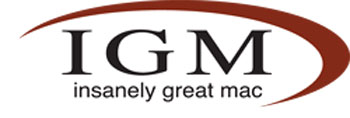Cringely: Apple Implementing Windows API in X.5?
April 23rd 2006
Robert Cringely makes some intelligent guesses in his latest PBS column.
Cringely, author of Accidental Empires, argues that Apple may have implemented the Windows API directly into OS X, possibly in 10.5 (the forthcoming 'Leopard' OS) or, if not, maybe 10.6.
It makes sense, Cringely says, for Apple to do so. It would support current and future plans for virtualization software, should Apple choose to go beyond mere Boot Camp.
Moreover, he hypothesizes, now that Tevanian - the father of the microkernel in OS X - is leaving Apple, perhaps we'll see a monolithic kernel (à la Linux) implemented in OS X. It's better, stronger, faster. And Linus Torvalds is on record dissing the OS X microkernel. Which means it must be bad.
It would be difficult - but not impossible - to ensure compatibility with PowerPC Macs by switching to a microkernel. But Cringely is right to point out the advantages for Apple: not only might its Macs gain more speed, but the gains might also be sufficient to push PowerPC owners to upgrade to new Macintosh systems.
Moreover, Apple has had no qualms about making its relatively recent hardware and software obsolete. Previously, its hardware was so tough, it could survive the San Francisco earthquake. Clearly, this hurt sales, as far too many Color Classics were still in use once Y2K rolled around.
Now, though, to take software as an example, 10.2 (Jaguar) has gone the way of the dodo, and 10.3 is getting long in the tooth. The latter will die a rapid death once 10.5 is out. To prove the point, my Lombard PowerBook was recently made obsolete, meaning no more OEM parts can be ordered (and it is obsolete too - hinges are goners, and so is the power connector/sound card).
But to return to Cringely's predictions: can you imagine switching seamlessly in a virtual environment running side by side with Windows? Going effortlessly from Mac to Windows apps and back again? Just for starters, what a boon for web designers: test pages in a number of browsers on both platforms in a matter of seconds.
New kernel. Native Windows. Virtual Windows. Are all the pieces of the jigsaw in place yet?
